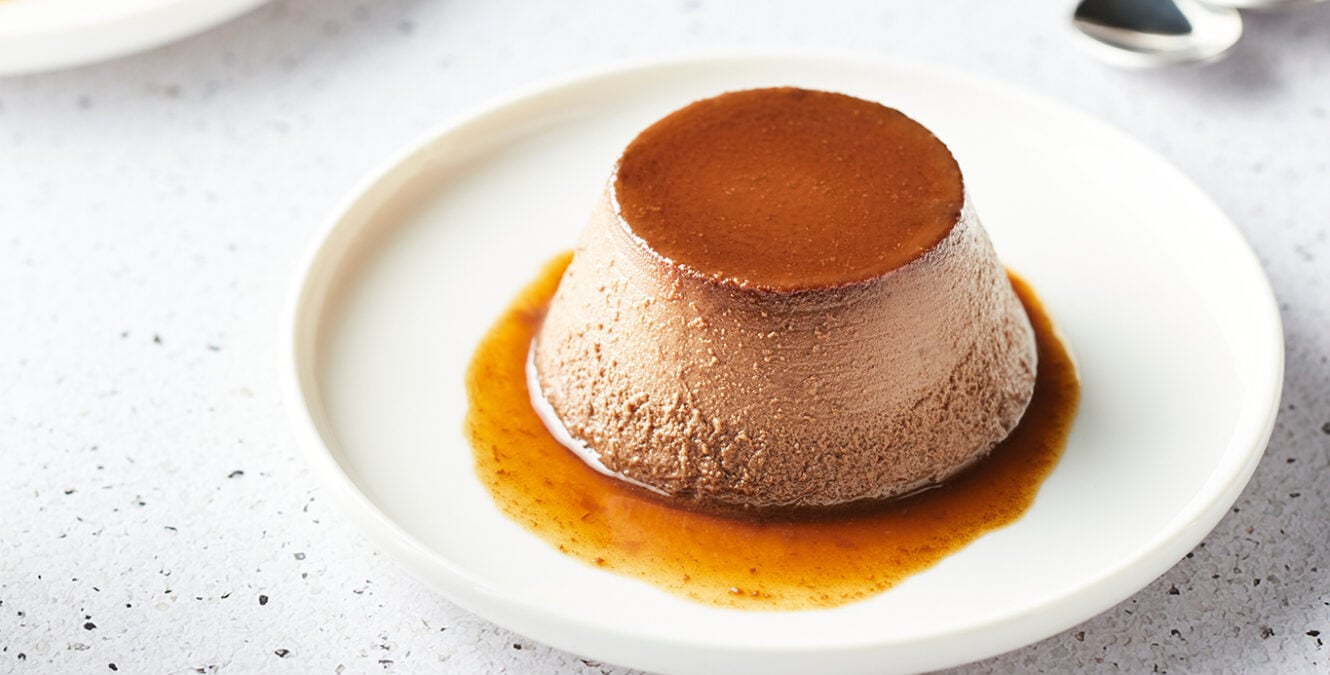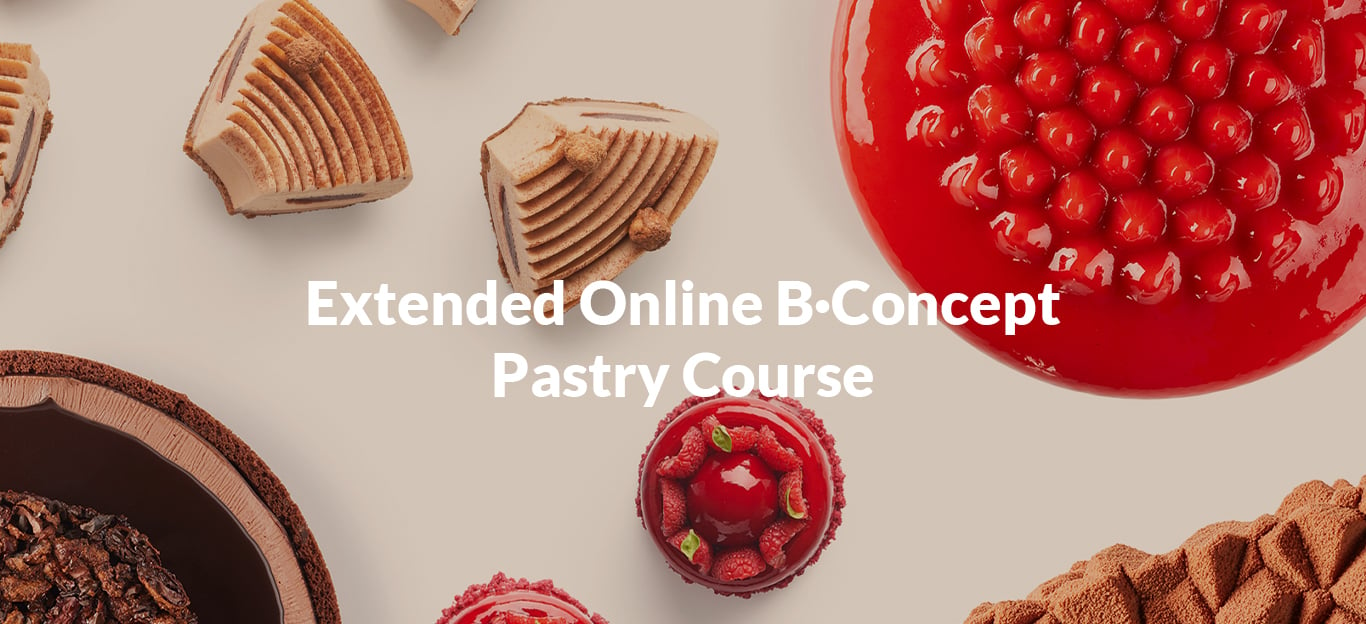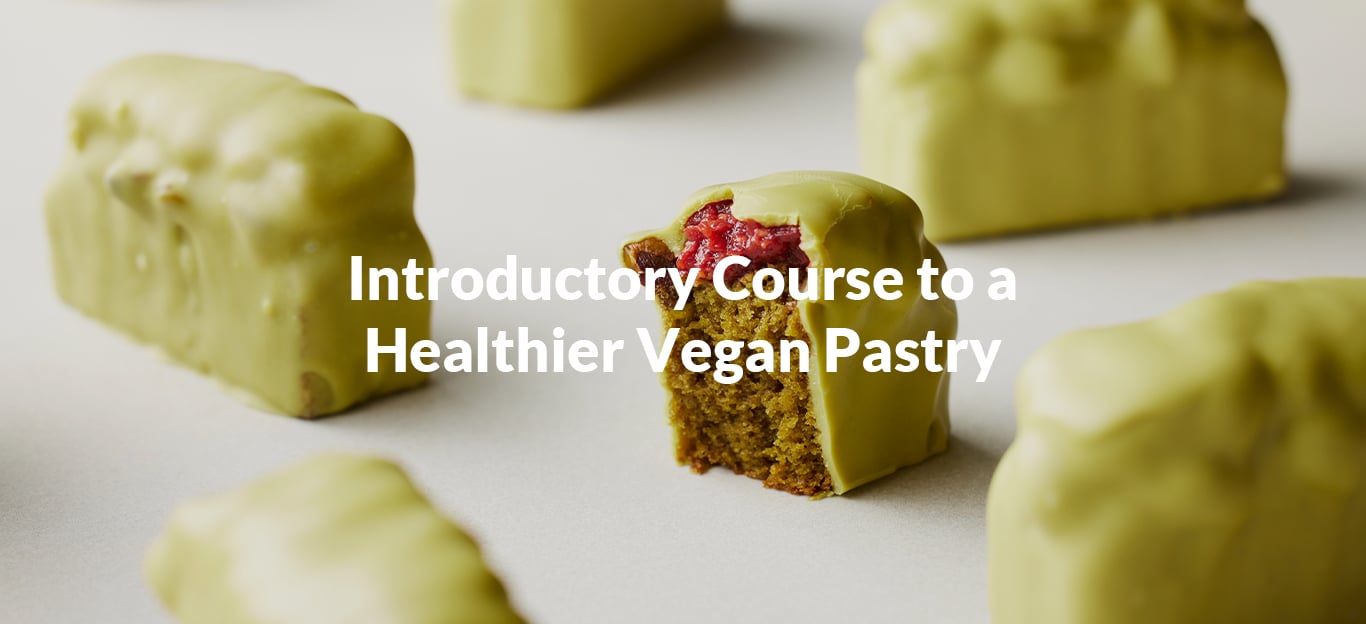
What does gelation in pastry consist of?
What does the gelation process in pastry consist of? When we think of gelation, the first thing that comes to mind are jelly-like textures, such as jams, marmalades, compotes or pâtes de fruit.
By using the gelation technique we convert a liquid substance into a semi-solid one, like flan. 🍮 However, most pastry recipes (mousses, cheesecakes or even bread) are gelled to give them structure and stability.
Using our B·Concept method we analyze ingredients, techniques, recipes execution processes, as well as all the physicochemical reactions that intervene in the process of creating gelled textures, among others.
Gelatine is the most common gelling agent, but we also use the gelation technique unknowingly when we work with egg proteins or the pectins found in fruit. Nonetheless, we should also bear in mind that not all gels are the same; the texture and properties of cooked egg white are very different from those of gelatine.
Did you know that gelatine is a gelling agent of animal origin? It is obtained from the collagen present in the skin, bones and cartilage of cows, fish, and pigs. It helps us to stabilize mousses and foams and create smooth gels that melt in the mouth, given that it’s melting point (37 – 40 ºC) is very close to body temperature.
There are types of gelatine with different grades of gel strength - or Bloom values - available on the market. It also exists in two different forms: powdered gelatine and gelatine sheets, though both products are equivalent. In the recipes in our book "Healthier, lighter and tastier pastry" we use 220 Bloom powdered gelatin, one that is most common.
On the other hand, agar-agar is obtained by cooking certain species of red seaweed and then drying out the resulting liquid. Unlike gelatine, agar-agar allows us to make hot gels with firm textures. Combined with corn starch, it can give us a smooth and creamy mouthfeel.
As you can see, gelation is a fundamental technique for the creation and execution of stable recipes and, to work with it, each gelling agent and the parameters that influence its performance must be taken into account.

In our Extended Online B·Concept Pastry Course we explain the 4 basic pastry techniques - gelling, thickening, emulsification and aeration - and the texturizing agents we use for each of them.
In addition, we also teach you about the molecular composition of pastry ingredients, which brings you one step closer to being able to formulate your own recipes from scratch..





